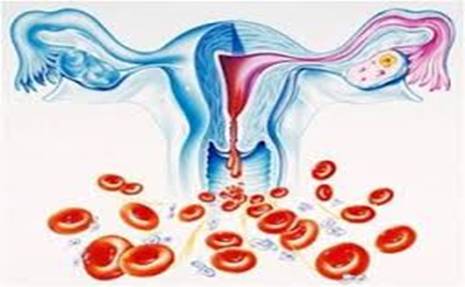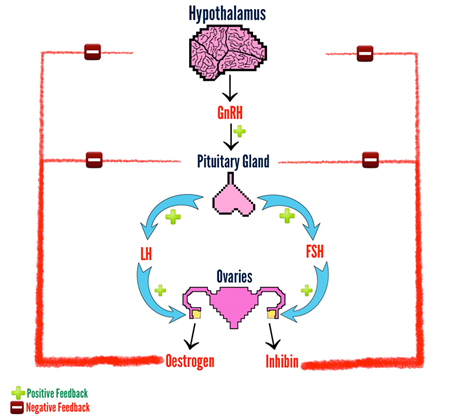MENORRHAGIA (Part One)

DEFINITION: Menorrhagia is defined as regular menstrual cycles, but with increased flow and duration.
It is one of the most common complaints in modern gynecology.
Clinically, menorrhagia is defined as a total blood loss > 80 ml / per cycle or menstruation lasting more than 7 days. According to statistics, 10 – 20% have menstruations in such quantity that it causes secondary anemia or is clinically defined as menorrhagia.
A normal menstrual cycle has a total blood loss of 25 – 80 ml/ per cycle and the duration of menstruation up to 7 days.

PATHOPHYSIOLOGY: Understanding the normal functioning of the menstrual cycle is very important to comprehend the etiology of menorrhagia. The menstrual cycle consists of 4 phases: follicular and ovulation, luteal, implantation, menstruation. In response to gonadotropin-releasing hormone (GnRH) produced by the hypothalamus, the pituitary gland produces follicle-stimulating hormone (FSH) and luteinizing hormone (LH), which stimulate the ovaries to produce estrogen and progesterone.
During the follicular phase under the influence of estrogen, we have an increase in the thickness of the endometrium (the inner layer of the uterus). This is known as the proliferative phase. During the luteal phase under the influence of progesterone, we have maturation of the endometrium known differently as the secretory phase. If fertilization occurs, the implantation phase is preserved. If fertilization does not occur, the decrease in estrogen and progesterone levels ends with menstruation.
ETIOLOGY: The causes of menorrhagia are divided into 4 categories:
- Organic causes.
- Infections of the genitourinary apparatus, especially sexually transmitted diseases.
- Coagulation disorders such as von Willebrand, deficiencies of factors II, V, VII, IX, prothrombin deficiency, Idiopathic Thrombocytopenic Purpura, thrombasthenia, etc.
- Chronic organic diseases such as hepatic or renal insufficiency.
- Endocrine causes
- Hyperthyroidism and hypothyroidism
- Prolactin-producing pituitary tumors. Through negative feedback, they lead to a decrease in the production of GnRH, consequently lowering the level of estrogen and progesterone produced by the ovaries, causing hypogonadism.
- Anovulatory cycles. This is more common in adolescents and perimenopausal women.
- Polycystic Ovarian Syndrome – polycystic ovaries with irregular menstruations, obesity, and hirsutism. Insulin resistance in these patients causes an increase in the production of androgens by the ovaries (male hormones).
- Vascular imbalance with a disorder in the balance between vasoconstrictors such as thromboxane A2 and prostaglandin F2 and vasodilators such as prostaglandin E2 and prostacyclin.
- Anatomical causes
- Fibromatous nodules are benign structures of the uterus. Intramural uterine fibroids may inhibit the normal contractions of the uterine musculature, thus hindering its main mechanism for hemostasis.
- Endometrial polyps are benign structures of the endometrium, the inner layer of the uterus. Their blood supply is more increased than that of the regular endometrium causing a decrease in venous return, accumulation of blood. As a result, the endometrium in that area becomes weaker and causes greater hemorrhage.
- Endometrial hyperplasia caused by unbalanced production of estrogen from that of progesterone.
- Iatrogenic causes
- Intrauterine device (IUD) may cause an increase in the amount of menstruation and cramps due to local irritation.
- Chemotherapy and steroid hormones.
- Use of anticoagulants.
- Hemorrhagic disorders.
- Menorrhagia from menarche (the first occurrence of menstruation).
- Family history of hemorrhagic disorders.
- Personal history of one or more of the following:
- Visible hematomas without any known injury.
- Hemorrhage from the gastrointestinal tract or oral cavity without any known causative organic lesion.
- Epistaxis lasting more than 10 min.

In such cases, consultation with a hematologist is advised.